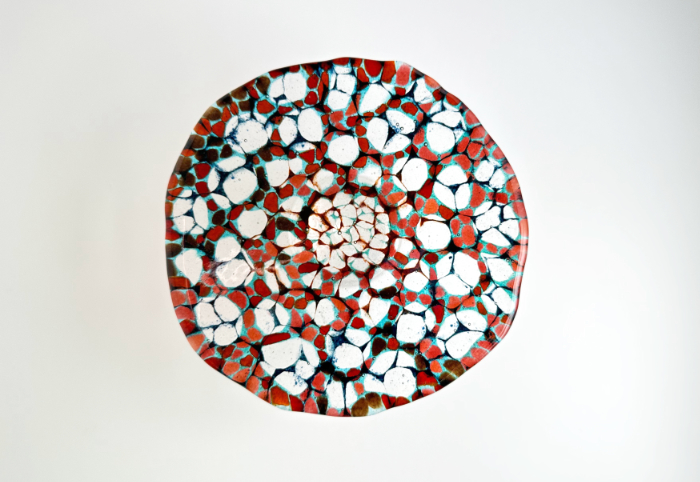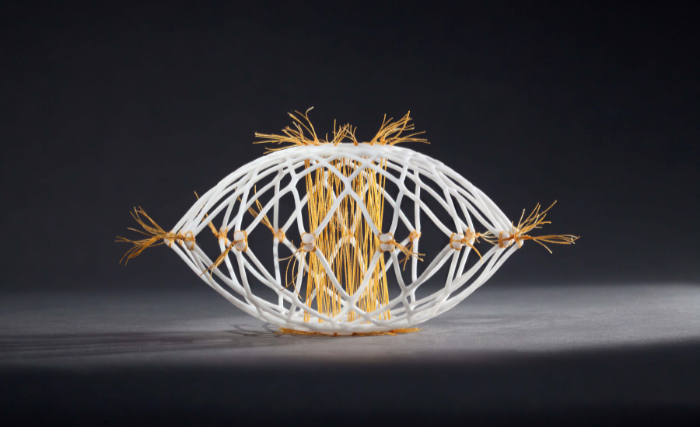
Magic with monochrome
Tracy Nicholls is fascinated by the process of decay and chooses opaque glass to depict her ideas, mostly using fusing and slumping techniques. Linda Banks finds out more.
What led you to start working with glass?
I was introduced to kiln-formed glass by a friend at work who had a glass studio. She used to bring in bits she had made. Fascinated, I enrolled on a taster course at the local adult college and was hooked. I then enrolled in an evening class progressing to the HNC and HND before moving on to UCA Farnham to do an MA in Contemporary Craft – Glass.
What glass techniques have you used and which do you prefer?
I have explored the various techniques within kiln-formed glass, starting with casting, but now I mostly fuse and slump. Recently I have been working with pate de verre. Occasionally I want to cast a piece, but I’m enjoying fusing different shapes and forms at the moment.
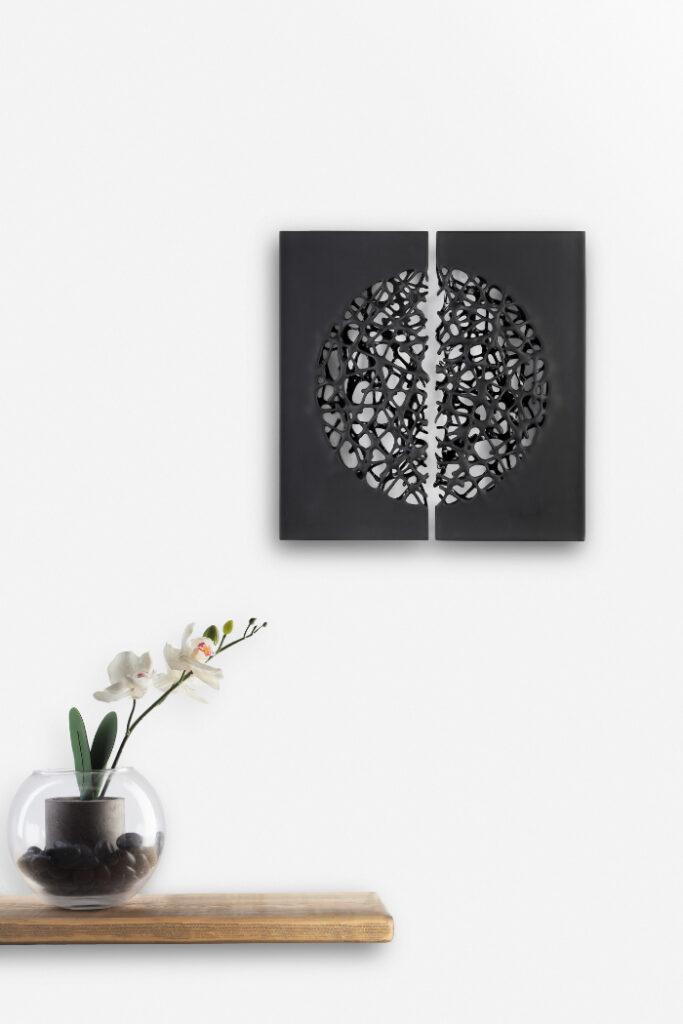
What is your creative approach? Do you draw your ideas out or dive straight in with the materials?
I’m not much of a sketcher, so I either go straight in with the materials or plot out the design on thin fire paper and assemble in the kiln. I work organically, so nothing is set in stone before I start and opening the kiln is always a surprise!
What inspires your work?
Much comes from microscopic images of disease, decay and erosion. The interplay with light within the forms is an important element, which can add another layer.
I shy away from ‘glassy’ glass, using opaque black and white to express my ideas. I use layers and textures to bring interest and depth to each piece.
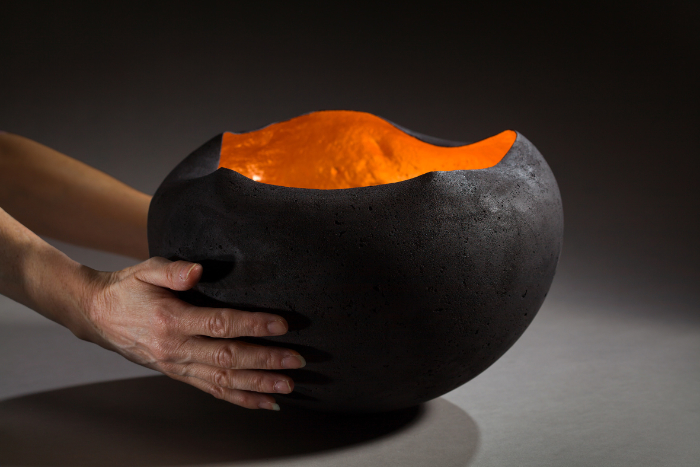
What message(s) do you want to convey through your art?
Using a muted colourway that fits easily into any interior, I hope my pieces invite contemplation. They change with the light and offer something new each time they are viewed. I want the viewers to forge their own connection with the work and I do not wish to impose the ideas that are personal to me.

What is your favourite tool or piece of equipment and why?
Probably my sandblaster is my favourite. It can transform my pieces instantly with a beautiful satin finish. I don’t think any piece escapes the sandblaster, each being either fully sandblasted or contrasting the sandblasted satin finish with the shine of kiln polish. Sandblasting adds an extra dimension and interest to the pieces without introducing extra elements or colour. Taking away the properties that glass is most recognised for and presenting it as matt and opaque can confuse people. My work is often mistaken for ceramic or metal.
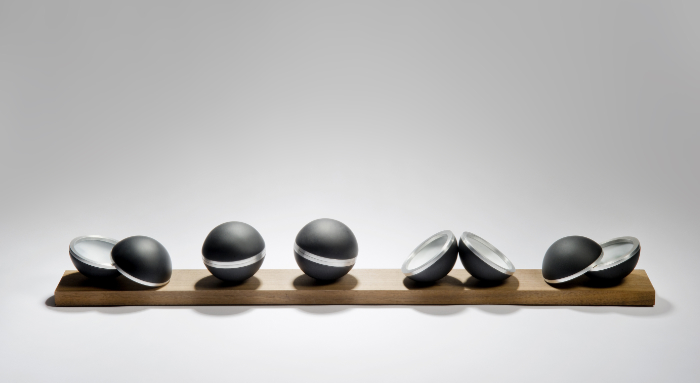
Do you have a favourite piece you have made? Why is it your favourite?
Usually the piece I am working on is my favourite, as it is new and exciting. If it becomes mundane, it’s time to try something new. I have a couple of very early pieces displayed in my house. One is the first lacy piece I made in evening classes, which I have returned to and which informs much of my current work. The other is a cast piece everyone told me would never work. They remind me where I started and what I have achieved.

Where do you show and sell your work?
I am currently showing with Contemporary Applied Arts in Marylebone, London, the Pyramid Gallery in York, as well as the Camp Gallery in Florida and Connecticut. I also have pieces in several museum collections in the UK and Europe and undertake commissions.
I also sell online through enquiries via my website and art sites, which has proved surprisingly successful.

What advice would you give to someone starting out on a career in glass?
Don’t give up. It can be the most infuriating of materials, but, when everything works and surpasses all expectations, it has all been worth it.
Do you have a career highlight?
It must be when I won the Best in Show title at the British Glass Biennale in 2008. I was still at UCA Farnham doing my MA and it was so unexpected.

Where is your glass practice heading next?
Alongside my current practice and making new work I have just finished exhibiting at Collect in London and I am following up some opportunities from that. There is also a collaborative project in the pipeline for this year, which I am very excited about.
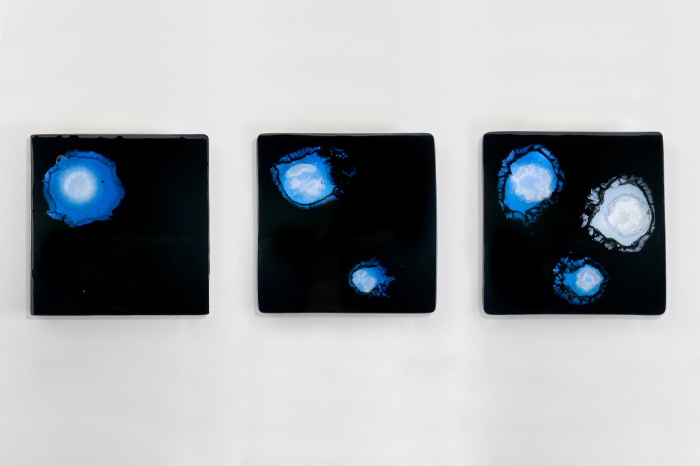
Is the global energy crisis affecting your practice?
I think it’s affecting everyone and glass making is particularly heavy in its energy consumption. I’m making sure the kiln is full before firing, plus planning the largest chunk of the firing to go on overnight, when my electricity tariff is lower.
About the artist
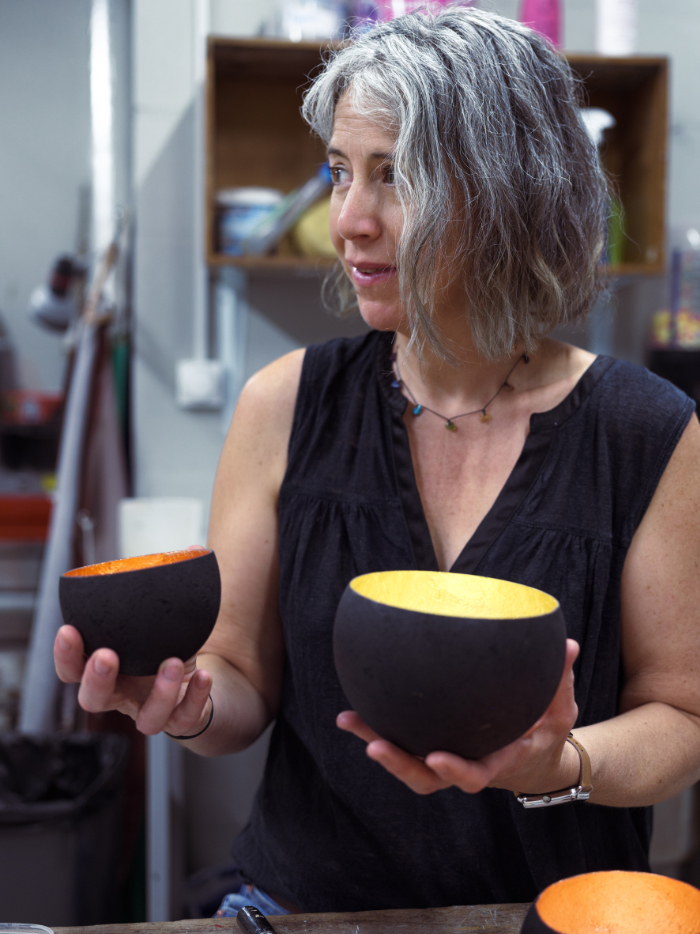
Tracy Nicholls is a British artist working in kiln-formed glass. She currently works from her studio in Surrey using predominantly opaque glass and a simple monochrome colour palette to create her intricate, sculptural pieces. She is fascinated by erosion, wherein solid forms disintegrate over time, becoming ever more delicate and fragile while transforming into lace-like structures.
She exhibits extensively in the UK and Europe. In 2014 and 2022 her work was included in Europe’s prestigious Coburg Glass Prize in Germany. Her pieces can be found in private and public collections worldwide, including the National Museum of Scotland, the Marinha Grande Museum of Glass in Portugal, the Turner Museum of Glass in Sheffield, and the Lette Glass Museum in Germany.
Find out more about Tracy Nicholls on her website.
Main image: ‘Aulisca’ by Tracy Nicholls. Photo: Amanda Rose.

